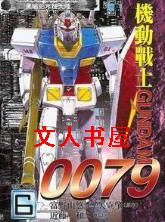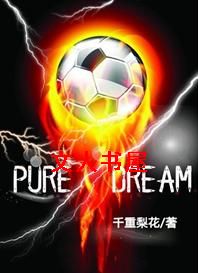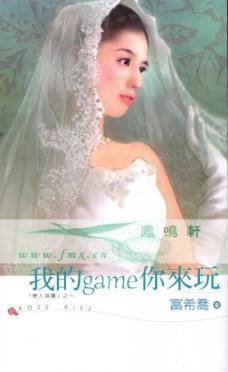my name is red-我的名字叫红-第98章
按键盘上方向键 ← 或 → 可快速上下翻页,按键盘上的 Enter 键可回到本书目录页,按键盘上方向键 ↑ 可回到本页顶部!
————未阅读完?加入书签已便下次继续阅读!
brass serving tray in the illustration of Red in Enishte’s book: doubtless the
work of Olive。
4。 As the cooks’ guild pushed past Our Sultan; they were cooking stuffed
cabbage with meat and onions in a cauldron resting on a stove in their cart。
The master cooks acpanying the cart stood on pink earth resting their
stew pots on blue stones; these stones were rendered by the same artist who
made the red ones on dark…blue earth above which floated the half…ghostly
creature in the illustration that Enishte called Death: the unmistakable work of
Butterfly。
5。 Mounted Tatar messengers brought word that the Persian Shah’s armies
had begun to mobilize for another campaign against the Ottomans; who
thereupon razed to the ground the exquisite observation kiosk of the Persian
ambassador who’d repeatedly affirmed to Our Sultan; Refuge of the World; in
a cascade of pleasantries; that the Shah was His friend and harbored nothing
but brotherly affection for Him。 During this episode of wrath and destruction;
water bearers ran out to settle the dust raised in the Hippodrome; and a group
of men appeared shouldering leather sacks full of linseed oil to pour over a
mob ready to attack the ambassador; in hopes of pacifying it。 The raised feet of
the water bearers and of the men carrying sacks of linseed oil were made by
278
the same artist who painted the raised feet of charging soldiers in the
depiction of Red: also the work of Butterfly。
I wasn’t the one who made this last discovery as I directed our search for
clues; moving the magnifying lens right and left; to that picture then this one;
rather it was Black; who opened his eyes wide and scarcely blinked gripped by
the fear of torture and the hope of returning to his wife who awaited him at
home。 Using the “courtesan method;” it took an entire afternoon to sort out
which of our miniaturists worked on each of the nine pictures left by the late
Enishte; and later; to interpret that information。
Black’s late Enishte didn’t limit any single page to the artistic talent of just
one miniaturist; all three of my master miniaturists worked on most of the
illustrations。 This meant that the pictures were moved from house to house
with great frequency。 In addition to the work I recognized; I noticed the
amateurish strokes of a fifth artist; but as I grew angry at the dearth of talent
shown by this disgraceful murderer; Black determined from the cautious brush
strokes that it was indeed the work of his Enishte—thereby saving us from
following a false lead。 If we discounted poor Elegant Effendi; who’d done
almost the same gilding for Enishte’s book and our Book of Festivities (yes; this
of course broke my heart) and who; I gathered; had occasionally lowered his
brush to execute a few walls; leaves and clouds; it was evident that only my
three most brilliant master miniaturists had contributed to these illustrations。
They were the darlings I’d lovingly trained since their apprenticeships; my
three beloved talents: Olive; Butterfly and Stork。
Discussing their talents; mastery and temperaments to the end of finding
the clue we were looking for inevitably led to a discussion of my own life as
well:
The Attributes of Olive
His given name was Velijan。 If he had a nickname besides the one I’d given
him; I don’t know it; because I never saw him sign any of his work。 When he
was an apprentice; he’d e get me from my home on Tuesday mornings。 He
was very proud; and so if he ever lowered himself to sign his work; he’d want
this signature to be plain and recognizable; he wouldn’t try to conceal it
anywhere。 Allah had quite generously endowed him with excess ability。 He
could readily and easily do anything from gilding to ruling and his work was
279
superb。 He was the workshop’s most brilliant creator of trees; animals and the
human face。 Velijan’s father; who brought him to Istanbul when he was; I
believe; ten years old; was trained by Siyavush; the famous illustrator
specializing in faces in the Persian Shah’s Tabriz workshop。 He hails from a
long line of masters whose genealogy goes back to the Mongols; and just like
the elderly masters who bore a Mongol…Chinese influence and settled in
Samarkand; Bukhara and Herat 150 years ago; he rendered moon…faced young
lovers as if they were Chinese。 Neither during his apprenticeship nor during
his time as a master was I able to lead this stubborn artist to other styles。 How
I would’ve liked him to transcend the styles and models of the Mongol;
Chinese and Herat masters billeted deep in his soul; or even for him to forget
about them entirely。 When I told him this; he replied that like many
miniaturists who’d moved from workshop to workshop and country to
country; he’d forgotten these old styles; if he’d ever actually learned them。
Though the value of many miniaturists resides precisely in the splendid models
of form they’ve mitted to memory; had Velijan truly forgotten them; he’d
have bee an even greater illustrator。 Still; there were two benefits; of which
he wasn’t even aware; to harboring the teachings of his mentors in the depths
of his soul like a pair of unconfessed sins: 1。 For such a gifted miniaturist;
clinging to old forms inevitably stirred feelings of guilt and alienation that
would spur his talent to maturity。 2。 In a moment of difficulty; he could
always recall what he claimed to have forgotten; and thus; he could
successfully plete any new subject; history or scene by recourse to one of
the old Herat models。 With his keen eye; he knew how to harmonize what
he’d learned from the old forms and Shah Tahmasp’s old masters in new
pictures。 Herat painting and Istanbul ornamentation happily merged in Olive。
As with all of my miniaturists; I once paid an unannounced visit to his
home。 Unlike my work area and that of many other master miniaturists; his
was a filthy confusion of paints; brushes; burnishing shells; his folding
worktable and other objects。 It was a mystery to me; but he wasn’t even
embarrassed by it。 He took no outside jobs to earn a few extra silver coins。
After I related these facts; Black said it was Olive who showed the most
enthusiasm for and the most ease with the styles of the Frankish masters
admired by his late Enishte。 I understood this to be praise from the deceased
fool’s point of view; mistaken though it was。 I can’t say whether Olive was
more deeply and secretly bound to the Herat styles—which went back to his
father’s mentor Siyavush and Siyavush’s mentor Muzaffer; back to the era of
Bihzad and the old masters—than he appeared to be; but it always made me
wonder whet




